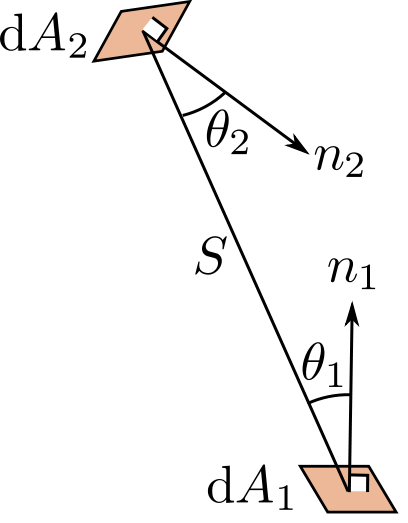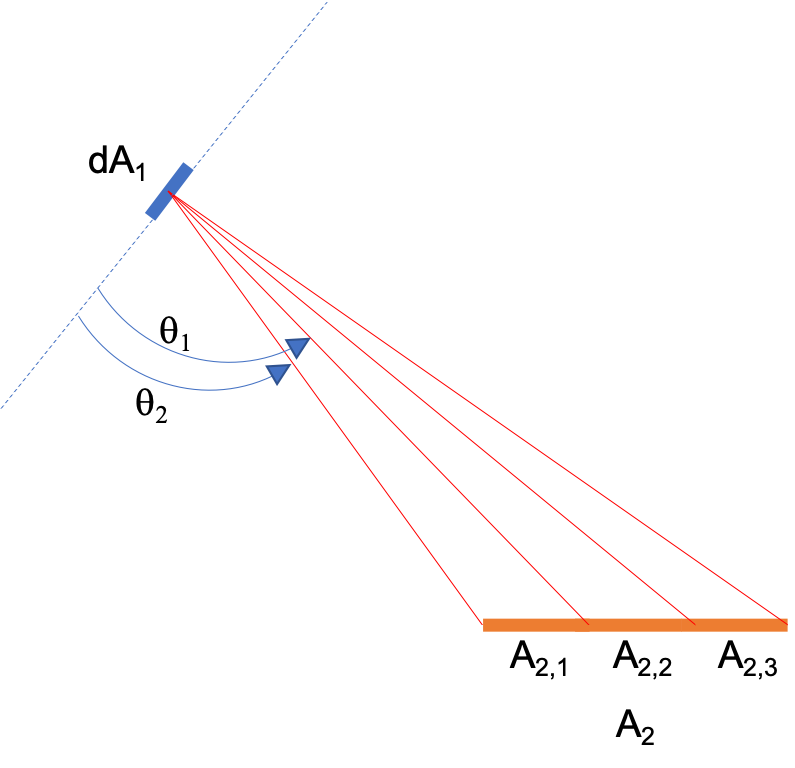View Factors
Theory
The view factors, also called configuration factors, come from the definition of the directional spectral radiative power of a differential area.

S directionWe can then integrate over \({\lambda}\) for a black body and rearrange:
Then:
And finally:
The view factor from the differential area \(dA_1\) to the differential area \(dA_2\) is then defined as:
And for two finite areas \(A_1\) and \(A_2\):
We can also note that by reciprocity:
Application
View factor of a wedge: http://www.thermalradiation.net/sectionc/C-5.html
View factor of parallel planes: http://www.thermalradiation.net/sectionc/C-2a.htm
View factor of angled planes: http://www.thermalradiation.net/sectionc/C-5a.html
The Hottel method is also widely used in the model
Adding non-diffuse reflection losses
For the derivation shown above, we assumed that the surfaces were diffuse. But as shown in 1, it is possible to add an approximation of non-diffuse effects by calculating absorption losses that are function of the angle-of-incidence (AOI) of the light.
If we’re interested in calculating the absorbed irradiance coming from an infinite strip to an infinitesimal surface, we can calculate a view factor derated by AOI losses by starting with the formula derived in http://www.thermalradiation.net/sectionb/B-71.html.

Fig. 1: Schematics illustrating view factor formula from dA1 to infinite strips
The view factor from the infinitesimal surface \(dA_1\) to the infinite strip \(A_{2,1}\) is equal to:
For this small view of the strip, we can assume that a given AOI modifier function (\(f(AOI)\)), which represents reflection losses, is constant. Such that:
We can then calculate the view factor derated by AOI losses from the infinitesimal surface \(dA_{1}\) to the whole surface \(A_{2}\) by summing up the values for all the small strips constituting that surface. Such that:
Note
Since this formula was derived for “infinitesimal” surfaces, in practice we can cut up the PV row sides into “small” segments to make this approximation more valid.
- 1
Marion, B., MacAlpine, S., Deline, C., Asgharzadeh, A., Toor, F., Riley, D., Stein, J. and Hansen, C., 2017, June. A practical irradiance model for bifacial PV modules. In 2017 IEEE 44th Photovoltaic Specialist Conference (PVSC) (pp. 1537-1542). IEEE.